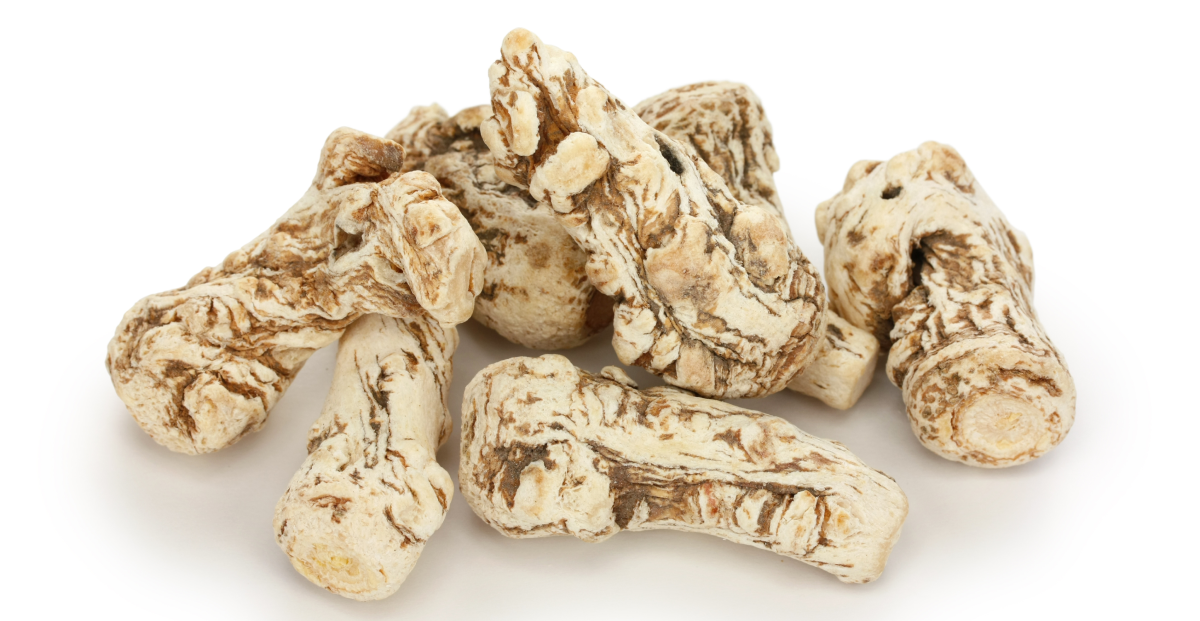
Medicine has been an ever-evolving subject across human history—from early civilizations purportedly using clay to treat their wounds to the establishment of Eastern Medicine and the invention of penicillin in the early 1900s. Among established forms of medicine, Eastern Medicine is the world's longest-standing, documented medical system.
The contrast between Eastern Medicine vs. Western Medicine represents two distinct approaches to healing. Eastern Medicine, with roots tracing back thousands of years to ancient Egypt, encompasses the use of Chinese medicine and Ayurveda techniques in disease prevention, diagnosis, and treatment. Western Medicine, on the other hand, has its foundations in modern medical science and interventions.
This article aims to help you understand the meaning of Eastern Medicine, how it works, how it differs from Western Medicine, and its benefits. Read below to learn more.
Table of Contents
- What Is Eastern Medicine?
- What Countries Use Eastern Medicine?
- What Are Forms of Eastern Medicine?
- Benefits of Eastern Medicine
- What Is Western Medicine?
- What Are Forms of Western Medicine?
- Benefits of Western Medicine
- Eastern vs. Western Medicine
- How Eastern Medicine and Western Medicine Complement Each Other
- Finding Balance in Eastern Medicine vs. Western Medicine
What Is Eastern Medicine?

The dominant Eastern Medicine meaning and methodology emphasizes the interconnectedness of the mind, body, and spirit for health and well-being. The term Eastern Medicine, encompassing Traditional Chinese Medicine and Ayurveda, is commonly used to refer to the different medical practices that started in Asia.
Traditional Chinese Medicine
This system of medicine dates back more than 2,000 years and is based on two main principles: Qi and Yin-Yang.
Qi
Qi is the vital life force flowing through every living thing's body. It flows along meridians (channels) in the body and keeps a person’s spiritual, emotional, mental, and physical health in balance. Constantly in flux, Qi adapts and flows to maintain harmony within the body’s faculties.
An imbalance can lead to illness and disease and typically arises from alterations that interfere with the Yin-Yang forces.
Yin-Yang
Yin and Yang are opposite and complementary forces that describe the quality of Qi. They represent dualities present within the universe—for example:
- Day and night
- Warm and cold
- Male and female
- Positive and negative
The underlying belief is that everything has an equal opposite side, and balance is the key.
According to Eastern Medicine, the balance of Yin-Yang and Qi means you are healthy; if they are out of balance, you are unwell. Thus, all Eastern Medicine practices are focused on promoting and maintaining the flow of Qi and harmony between Yin and Yang.
If someone’s ill, Eastern Medicine practitioners inspect the tongue and pulse to determine where Qi flow is blocked in the body. They then prescribe the best treatment, drawing on acupuncture, herbal medicine, and tuina (remedial massage, among others).
Read more with The History and Development of Traditional Chinese Medicine.
Ayurveda
Ayurveda is an Eastern holistic medicine system that originated in India thousands of years ago. It emphasizes a balance between the mind, body, and spirit through different practices such as:
- Herbal medicine
- Dietary changes
- Yoga
- Meditation
It exists on the principle that different lifestyle adjustments tailored to individual constitution, or dosha, are vital to promoting overall health and wellness. Ayurveda shares fundamental principles with Traditional Chinese Medicine in that the system also emphasizes the importance of balance and harmony for maintaining health.
What Countries Use Eastern Medicine?
Eastern Medicine is primarily used in countries across Asia, where it originated and has been practiced for generations. These countries include:
- China
- India
- Japan
- Korea
- Thailand
- Vietnam
Eastern Medicine is also widely recognized in other countries where an interest in Traditional Chinese Medicine or Eastern holistic medicine practices is prevalent.
What Are the Forms of Eastern Medicine?

What is considered Eastern Medicine? From herbal medicine to hands-on therapies, Eastern Medicine examples offer insight into ancient healing traditions aimed at nurturing the body, mind, and spirit.
Acupuncture
Acupuncture involves the strategic insertion of thin needles through the skin to stimulate specific body points known as meridians, which control the flow of Qi in the body. Acupuncture is believed to stimulate the body and release natural painkillers, resulting in reduced pain, increased blood flow, and overall well-being.
Traditional Chinese Medicine
Traditional Chinese Medicine is one of the oldest Eastern Medicine practices, relying on plant-based remedies known for their medicinal benefits. These herbal preparations take various forms, including:
- Pills
- Capsules
- Tablets
- Concoctions
- Powders
- Pastes
Each form of herbal medicine is tailored to its intended use, each with specific and unique properties that affect and nourish different body parts.
Read more about Traditional Chinese Medicine and Pain Management.
Eastern Nutrition and Dietary Therapy Practices
In Chinese medicine, food isn’t just an energy source. It is a means of maintaining balance and harmony within the body.
The concepts of Yin-Yang and the Five Phases (sweet, acrid, sour, bitter, and salty) are used to guide dietary choices for each person:
- Yin-Yang describes opposites like hot and cold or wet and dry.
- The Five Phases give shape, color, and character to the diet.
Since food and our bodies do not remain constant, dietary adjustments are made to accommodate an individual's state, like dampness, heat, and cold. Diet is also modified according to season, lifestyle, climate, and environment.
Tuina
Tuina is a restorative massage that has its origin in ancient China. It’s thought to be the oldest bodywork system, stimulating Qi flow in the body, resulting in balance and harmony. It uses the same principles as acupuncture to stimulate specific meridians in the body.
Tai Chi
Tai chi is one of the most distinctive and recognizable examples of Eastern Medicine. However, most people might not associate it with medicinal value and treatment.
This practice uses gentle movements, postures, breathing, and mental focus to restore balance within the body. It improves balance and stability in older people, helps with pain, supports circulation, promotes quality of life, and boosts moods.
Cupping
Cupping dates back to 1550 B.C. In this technique, the practitioner places different-sized cups on the skin to create suction. The cups may be made from glass, bamboo, or silicone. This Eastern Medicine practice is great for relaxing the muscles, drawing out dampness and heat, releasing wind and cold, improving the flow of Qi, promoting circulation, and managing inflammation.
Moxibustion (Moxa)
Moxibustion, an ancient healing method, has been used for thousands of years and involves burning a dried Chinese Mugwort herb (moxa) on specific meridian points on the body. This practice is beneficial for managing pain, improving circulation, supporting fertility and reproduction functions, nourishing the body, and improving overall well-being.
Benefits of Eastern Medicine

Eastern Medicine, widely used in Asia and increasingly gaining popularity in the West, is embraced for its undeniable advantages. Compared to processed medicine, it’s natural, has few side effects, and focuses on treating the root of the issue, not the symptoms. Let’s take a more in-depth look into the benefits of Eastern Medicine:
- All Natural: Eastern Medicine uses a pharmaceutical-free approach to deliver treatment and relies on natural herbs, nutrition, and practices. With Eastern Medicine treatments, every prescription is organic and minimally processed.
- Prioritized Balance: Eastern Medicine takes a holistic approach to treatment and treats the body as one organism with interconnected functions. Chinese medicine treats the body and focuses on harmonizing the mind and spirit to ensure they are balanced and communicating effectively for optimal health.
- Reduces Stress and Anxiety: Chinese medicine promotes mental well-being with practices like acupuncture and tuina. Stimulating key points and channels in the body helps release negative energy and tension that may contribute to our overall well-being. This helps return harmony and balance, reducing muscle tension, stimulating better circulation, and improving sleep.
- Supports Chronic Pain and Headaches: Acupuncture, a 3,500-year-old practice, is believed to help with pain from headaches, joint concerns, and neck and back pain. It is also believed to address concerns about stress and injury.
According to research, combined Traditional Chinese Medicine practices like nutrition, tai chi, and acupuncture can help patients suffering from chronic headaches and tension issues. [1]
In research done at Memorial Sloan Kettering, patients who received acupuncture reported having fewer neck muscle aches and pain, osteoarthritis, and chronic headaches than patients in the control group.[2]
- Preserve Muscle Strength, Flexibility, and Balance: According to Harvard Medical School, regularly practicing tai chi can help improve muscle strength, maintain flexibility, increase balance, and improve circulation. A study conducted by Harvard researchers reported that 12 weeks of tai chi helped older patients build a “healthy body, strong heart, and sharp mind.” [3]
- Results in Very Few Side Effects: Pharmaceutical prescriptions often have side effects that negatively affect how our bodies function. However, Chinese medicine prescriptions have very few side effects.
Explore what’s behind Solstice’s efforts to make Traditional Chinese Medicine accessible and relevant in modern medicine.
How Effective Is Eastern Medicine?
Because it has been used for centuries, many people trust Eastern Medicine practices to be effective in promoting overall wellness and addressing underlying imbalances in the body. It’s essential to recognize the primary differences between Eastern Medicine vs. Western Medicine when considering the efficacy of a specific practice or modality—Eastern Medicine focuses on holistic approaches to wellness rather than the Western approach of treating acute or severe health conditions that require immediate intervention.
What Is Western Medicine?
Western Medicine, also known as conventional medicine or mainstream medicine, is the healthcare system prevalent in Western societies. It is built on a foundation of scientific research and evidence-based practices, emphasizing the use of:
- Pharmaceutical drugs
- Surgeries
- Vaccinations
- Emergency medical interventions
- Medical technology to diagnose and treat illness and disease
The National Cancer Institute describes Western Medicine as “A system in which medical doctors and other health care professionals (such as nurses, pharmacists, and therapists) treat symptoms and diseases using drugs, radiation, or surgery.” [4]
The dominant approach of Western Medicine focuses on understanding a disease's particular causes, symptoms, or components and using targeted interventions to address them. Western Medicine focuses on treating the symptoms of the disease and specific organs, often without considering how medication might affect the body's overall functioning.
Practitioners of Western Medicine are typically required to undergo rigorous medical training and adhere to standardized protocols established by regulatory organizations.
What Are Some Forms of Western Medicine?
Western Medicine is the basis upon which modern systems of medicine operate, and it usually involves prescribing particular drugs for specific concerns. It takes many forms, including several specialties, such as:
- Primary Care Medicine: Comprehensive health services are provided by general practitioners or family doctors, including preventive check-ups, diagnostic tests, and treatment of common illnesses.
- Surgery: Surgical interventions range from minor outpatient procedures to complex surgeries that require a hospital stay, such as heart or brain surgery.
- Emergency Medicine: Urgent care and emergency departments provide immediate care for severe acute illnesses, injuries, and life-threatening conditions.
- Psychiatry and Counseling: Mental health professionals diagnose and treat psychiatric disorders like depression, anxiety, schizophrenia, and substance use disorders, often with medications.
- Rehabilitation Therapy: Specialists help patients respond and recover from injuries and chronic conditions through physical therapy, occupational therapy, and other rehab services.
- Anesthesiology: Anesthesiologists administer anesthesia to manage or eliminate pain during specific procedures, such as surgery, labor and delivery, critical pain management, and diagnostic tests.
- Specialized Medicine: Specialties like cardiology, neurology, oncology, dermatology, and other areas of medicine focus on specialized care for particular health conditions in specific body regions.
Benefits of Western Medicine
Western Medicine utilizes science-based treatments and technologies to improve patient outcomes and quality of life by treating various disease symptoms. Here are a few of the ways Western Medicine works to improve patient outcomes:
- An Evidence-Based Approach: Western Medicine treatments rely on scientific research and clinical trials to develop and validate medical treatments and technology to ensure processes are safe and based on evidence.
- Advanced Medical Technologies: Western approaches leverage the latest technology to diagnose and treat illness, including cutting-edge imaging, testing, and non-invasive techniques to ensure precision and efficiency. This technology is typically readily available to patients in many practices and clinics.
- Pharmaceutical Interventions: Various drugs that undergo testing and regulation to ensure efficacy and safety are used to manage symptoms and treat disease. In contrast to herbal medicine, pharmaceutical treatments are designed to provide a high, targeted level of specific symptom relief. Antibiotics, for example, are a Western medical development and have saved millions of lives. [5]
Western Medicine encourages collaboration among different healthcare professionals for a multidisciplinary approach to care. This comprehensive approach encourages integrated treatment plans that are tailored to patient needs on an individual level.
- Comprehensive Healthcare Specialties: Western Medicine incorporates a variety of specialties and services that address one or more areas of healthcare at a time. Patients can seek care for targeted health concerns and manage complex medical conditions with a specialist.
Eastern vs. Western Medicine

The differences between Eastern Medicine vs. Western Medicine are readily apparent.
Eastern Medicine focuses on:
- Treating the individual as a whole
- Holistic prevention and treatment that addresses energy flow and balance
- Techniques to heal the mind, body, and spirit
- Therapies such as acupuncture, herbal medicine, and meditation
- An inductive approach to healing, observing patterns to recognize the relationship between energy, harmony, and health
Eastern holistic medicine is the oldest system of medicine in the world, often labeled as complementary and alternative when compared to Western Medicine.
Western Medicine emphasizes:
- Treating the symptoms of the disease
- Diagnosis and treatment of specific conditions
- Scientific research and evidence-based medicine treatments
- Pharmaceutical drugs, surgery, and medical technology
- A deductive approach to healing, forming a hypothesis to narrow down the cause of a disease, often separate from overall health and well-being.
Western Medicine separates organ systems and symptoms with a systemic approach to determine the best treatment. On the other hand, Eastern Medicine is a holistic treatment system that originates from Asia and isn’t a part of standard medical care in Western countries.
Western Medicine separates health from disease, but Eastern Medicine views health as a balanced state and disease as an unbalanced state. Western Medicine concerns itself with changing the environment, while Eastern Medicine adapts to the environment.
How Eastern Medicine and Western Medicine Complement Each Other

Both Eastern and Western Medicine can be advantageous and disadvantageous, depending on yourperspective. But is there a place where we can enjoy the benefits of both systems? A middle ground where they can be complementary?
We believe there is. Integrating Eastern and Western Medicine can create a comprehensive approach to healthcare, addressing a broader scope of well-being.
Holistic Wellness
There is an increase in the uptake and incorporation of Eastern Medicine into mainstream medicine, focusing on the whole being when approaching treatment. For example, rather than just prescribing medication to treat mental health issues, we see medical practitioners using Chinese practices like meditation as part of treatment.
Personalized Preventive Care
Considering individual needs is essential for physical, mental, and spiritual well-being. By incorporating Eastern holistic medicine into medical routines, individuals can complement the disease-focused approach of Western Medicine with personal practices such as meditation, tai chi, and dietary adjustments to promote balance in the body.
Increased Mind-Body Connection
A mind-body connection lies at the heart of Traditional Chinese Medicine. There’s a significant body of scientific research documenting how beneficial Traditional Chinese Medicine may be in treating some health concerns, with many outcomes that point to positive effects related to balance, mobility, vitality, and quality of life.[6] Additional research to strengthen conclusions will explore these positive effects further.
Enhanced Symptom Management
By integrating Eastern and Western approaches to wellness, individuals can access a broader range of symptom management and relief.
For example, a 2020 study reported that acupuncture might be beneficial in supporting lower back pain. The review also reported that combining acupuncture with other forms of mainstream treatment was more effective than stand-alone conventional treatments. [7]
In another study, it was reported that combining tuina with conventional treatment resulted in improving irritable bowel syndrome symptoms. [8]
Perhaps there’s something we can draw from both systems to improve our health and well-being.
Finding Balance in Eastern Medicine vs. Western Medicine

By embracing the strengths of Eastern vs. Western healing modalities, we can cultivate a balanced approach to care that addresses all aspects of well-being: physical, mental, and spiritual.
Eastern or Traditional Chinese Medicine offers many benefits, but like anything, it also has some disadvantages. For instance, it may not be fast-acting compared to Western Medicine and may not be suitable for addressing urgent medical conditions.
However, Eastern Medicine takes a holistic healing approach steeped in centuries of tradition and wisdom. While it can be incredibly valuable when used as a complementary therapy in treatment, it should not be misconstrued as a replacement for conventional treatment, especially for serious conditions. When combining Eastern Medicine with your routine treatment, please be sure to inform your doctor or Traditional Chinese Medicine provider.
Browse our Traditional Chinese Medicine solutions or contact Solstice Medicine for more information.


